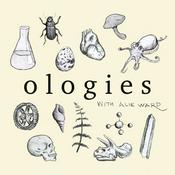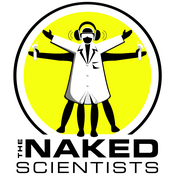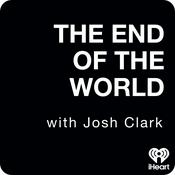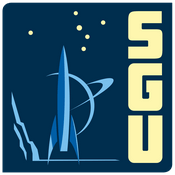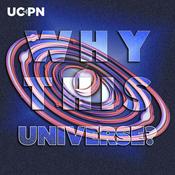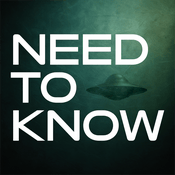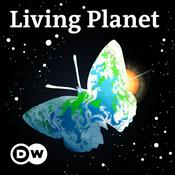8 episodes

What Do You Do When Your Body Is Its Own Enemy?
2025/8/13 | 13 mins.
Lining the vessels that carry blood and oxygen to your brain, there’s a protective filter than keeps bad stuff from getting out of the bloodstream and into the brain where it can do harm. It’s called the blood-brain barrier. But this feature becomes a problem when doctors need to get chemotherapy to a brain tumor. That protective barrier then stands between cancer and drugs that could treat it.Physician-scientist Cheng-Chia “Fred” Wu of the Fralin Biomedical Research Institute is investigating how to use sound to temporarily open that barrier to allow cancer drugs to reach brain tumors, like those caused by the highly lethal childhood cancer he treats, diffuse midline glioma.“As a radiation doctor, I point beams to fight cancer. That's what we do. Point and shoot,” Wu said. “Ultrasound is very similar to radiation in many ways … and so when I first learned about it, I just felt that this was a technology that can really be transformative.”

Your Body: Friend or Foe?
2025/8/06 | 16 mins.
The childhood brain cancer diffuse intrinsic pontine glioma (DIPG) and diffuse midline glioma (DMG) are rare but aggressive cancers, and physicians lack an effective systemic therapy for them. Dr. Wu researches novel technologies to develop a precision-medicine based approach for drug delivery to treat these tumors. Focused ultrasound (FUS), used in combination with new and existing drug therapies as well as radiation, holds promise for improved treatments in these and other cancers. With labs at the Fralin Biomedical Research Institute at VTC in Roanoke and the Children's National Research & Innovation Campus in Washington, D.C., Dr. Wu aims to leverage technological advances from Virginia Tech and patient trial expertise at Children's National to advance cancer care for children and others.

How Does a Brain Even Happen?
2025/7/03 | 19 mins.
The cerebellum hasn’t gotten much love from brain scientists historically, but neurobiologists today are discovering how it works to control motor functions, and how problems in that brain region cause movement disorders.Research by Meike van der Heijden, neurobiologist and assistant professor at the Fralin Biomedical Research Institute at VTC, has found that disorders like dystonia and tremors are connected to changes in how nerve cells in the cerebellum communicate.Van der Heijden says the key to understanding what goes wrong in the cerebellum might lie in understanding normal development in children. “If we understand what is the timeline of that normal development,” she asked, “can we kind of use that to back engineer treatments … in adulthood.”

What If Sound Could Heal?
2025/3/04 | 22 mins.
Sound has been harnessed for uses from medical imaging to SONAR. Now, scientists are exploring how ultrasound can be focused and used to treat conditions as varied as chronic pain, addiction, and cancer. Wynn Legon explains the evolution of focused ultrasound and how his lab is contributing to the growing list of whats the technology can benefit our health.Wynn Legon is an assistant professor at the Fralin Biomedical Research Institute at VTC in Roanoke. His lab studies the use of low-intensity focused ultrasound (LIFU). LIFU is an emerging form of noninvasive neuromodulation that uses mechanical energy to affect neuronal activity. The technology combines high spatial resolution with deep focal lengths providing unprecedented non-invasive access to the human brain. The enormous potential of low-intensity focused ultrasound stems from the ability to focus it through the intact skull to a millimeter-sized focal spot virtually anywhere in the brain. This makes it a powerful alternative to both invasive neurosurgical procedures and other non-invasive brain stimulation techniques.

Why Don’t I Slosh When I Walk?
2025/2/25 | 15 mins.
Human beings are mostly water, and about a fifth of that water is interstitial fluid, flowing in the spaces between our cells. Jenny Munson, a world leader in the study of interstitial fluid flow, explains how fluid flow changes in diseases like brain cancer and Alzheimer’s disease, and how that understanding is being used to improve treatments of those conditions and others. Munson is a professor and director of Fralin Biomedical Research Institute's Cancer Research Center in Roanoke, Virginia. Part of her lab’s research focuses on brain cancer, and how fluid flow increases between cells within the tissue at the edge of the tumor where cancer cells mix with neighboring brain cells and evade typical therapies. Munson and her team believe fluid flow can alter how a tumor responds to drug therapies. The lab is also translating many of its methods and hypotheses to understand the role of fluid flow in immunity, aging, and women's health.
More Science podcasts
Trending Science podcasts
About Big Science Small Pod
Listen to Big Science Small Pod, The Infinite Monkey Cage and many other podcasts from around the world with the radio.net app

Get the free radio.net app
- Stations and podcasts to bookmark
- Stream via Wi-Fi or Bluetooth
- Supports Carplay & Android Auto
- Many other app features
Get the free radio.net app
- Stations and podcasts to bookmark
- Stream via Wi-Fi or Bluetooth
- Supports Carplay & Android Auto
- Many other app features


Big Science Small Pod
download the app,
start listening.


